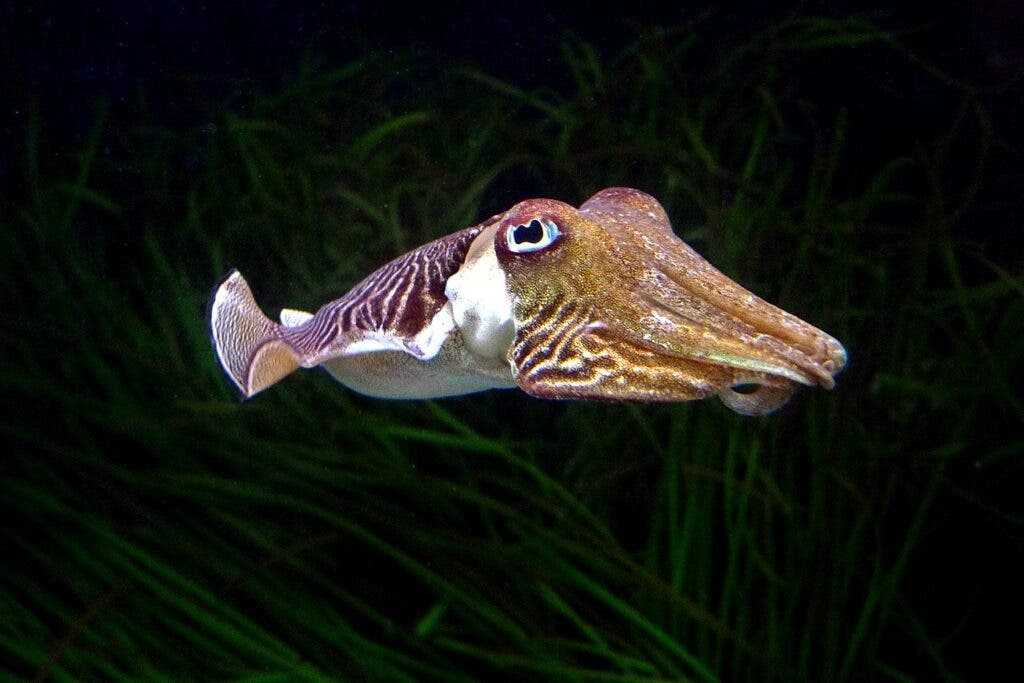A new paper reports on the first documented instance of a non-social animal showing self-control in the marshmallow test. They also join humans, chimps, parrots, and crows as the only known species capable of delaying gratification.

The Stanford marshmallow test is an experiment that checks for an individual’s ability to delay gratification. It’s usually performed with young children and involves, surprisingly, a marshmallow (or another type of sweet temptation). The child is told to not eat the treat before the researcher has’ to leave for a short period. If the child can resist the sugary bait by the time the scientist is back, it’s safe to assume that they have ample capacity for self-control and delay gratification.
Both of those traits are relatively reliable indicators of success later in life, as we need self-control to resist distractions and the ability to delay gratification so we can put the work in first. But it also seems to be an indicator of intelligence, since you need some cognitive capacity to understand that giving up some food now is worth a greater reward later on. And now, a new species has passed the test.
The cuttlefish and the marshmallow
“We used an adapted version of the Stanford marshmallow test, where children were given a choice of taking an immediate reward (1 marshmallow) or waiting to earn a delayed but better reward (2 marshmallows),” says lead author Alexandra Schnell of University of Cambridge, UK.
“Cuttlefish in the present study were all able to wait for the better reward and tolerated delays for up to 50-130 seconds, which is comparable to what we see in large-brained vertebrates such as chimpanzees, crows, and parrots.”
The cuttlefish in this study showed that they can wait for a better meal even if it means giving up one that’s right in front of them. This is the first time this link between self-control and intelligence has been underscored in a species other than humans and chimpanzees. The study was carried out at the Marine Biological Laboratory (MBL) at Woods Hole Oceanographic Institution.
Cuttlefish were trained to associate a particular visual cue with a reward, in the form of food. These cues were markings placed on chambers with different foods inside. One marking, for example, meant that the door would open the moment food was placed inside. Another, that there would be a delay before the door would open. One cue was meant to give them more trouble: it meant that even if food was placed in the chamber, and the door opened, there would be an extra wall of plastic preventing them from reaching the reward.
At first, the cuttlefish would attack the rewards immediately. Over time, however, they started learning the rules of each symbol — they would stop approaching the walled-off chambers entirely, for example.
After this, the experiment was restarted but with an extra condition. The researchers would place the animal’s favorite reward in the delay chamber, and a second-best option in the immediately-opening chamber. The control measure put the favorite reward in the “immediate” chamber, but it was also walled-off and marked as such.
“We wanted to see if they were able to exert self-control in a flexible manner depending on the context,” said Dr Schnell.”They could see their preferred food in the unobtainable chamber, but they could never get to it – so they needed to make a decision whether to attempt to, or just take the immediate option.”
They typically waited for the preferred prey if given the option, the team notes, being able to maintain delays of up to 130 seconds in some cases.
As to why cuttlefish have developed this ability is still relatively unclear. For us humans, a very social species, the ability to delay gratification is probably tied to our need to prevent conflict and strengthen bonds inside the group. Waiting for your partner or children to eat first, before you do as well is a good example of how such behavior can benefit us socially and the species as a whole. It could also be tied to our history as tool-makers and hunters (we had to wait for the tools to be ready and the animals to show up before we ate). Birds likely developed it for similar reasons.
Cuttlefish, however, do not share these traits. They’re smart but not very social, and they don’t build tools (as far as we know). The authors believe that their ability to delay gratification is tied to their ability — and need — to use camouflage. Motion is very easy to spot, so an impatient cuttlefish risks getting chewed on, no matter how good their camouflage is.
“Cuttlefish spend most of their time camouflaging, sitting and waiting, punctuated by brief periods of foraging,” Schnell says. They break camouflage when they forage, so they are exposed to every predator in the ocean that wants to eat them.
“We speculate that delayed gratification may have evolved as a byproduct of this, so the cuttlefish can optimize foraging by waiting to choose better quality food.”
The findings are exciting in themselves, but they’re especially exciting since the cuttlefish is the first animal that we know can delay gratification outside of the primate and bird families. The authors explain this is a great example of convergent evolution, where completely unrelated lineages develop the same trait or behavior.
The paper “Cuttlefish exert self-control in a delay of gratification task” has been published in the journal Proceedings of the Royal Society B.






